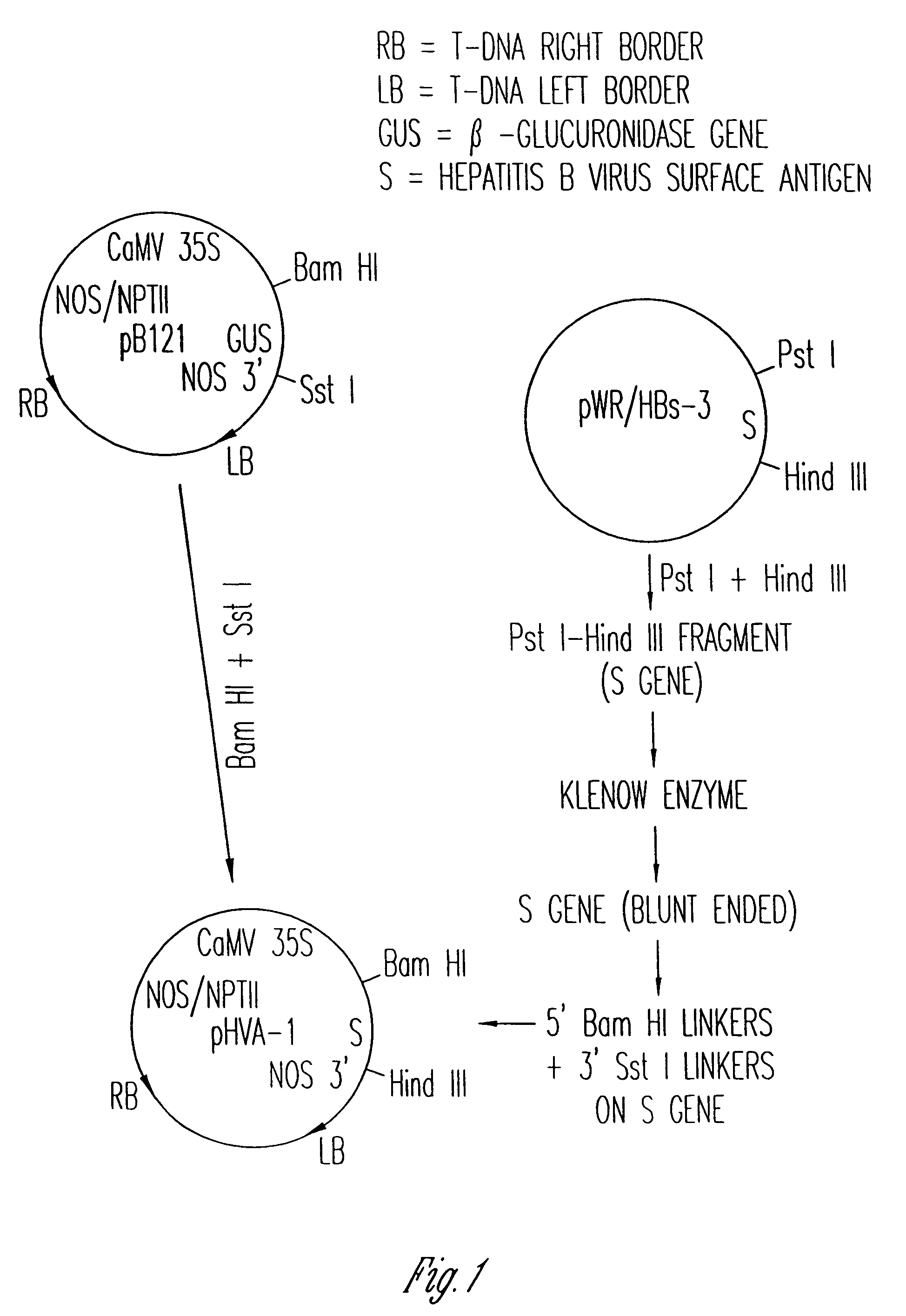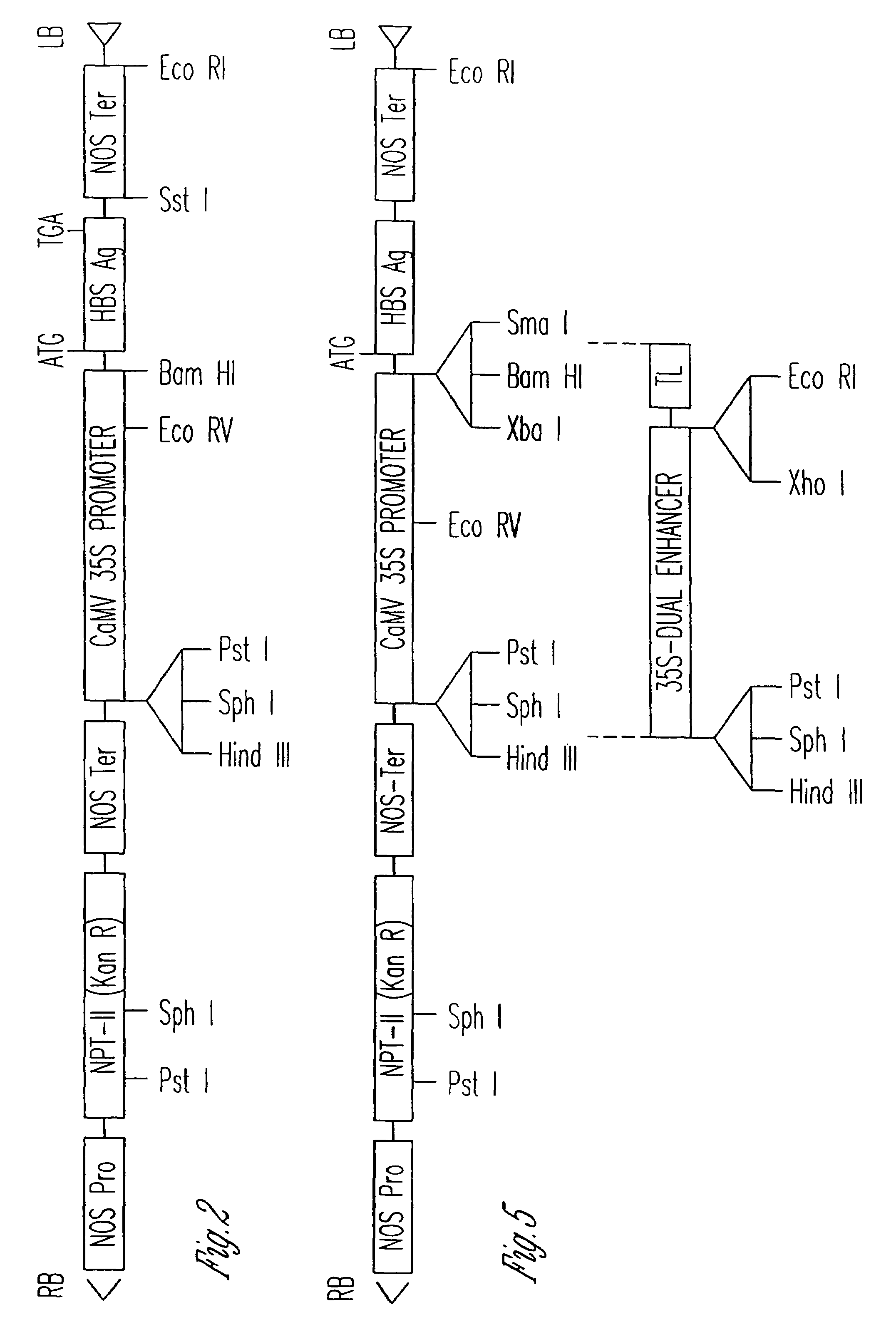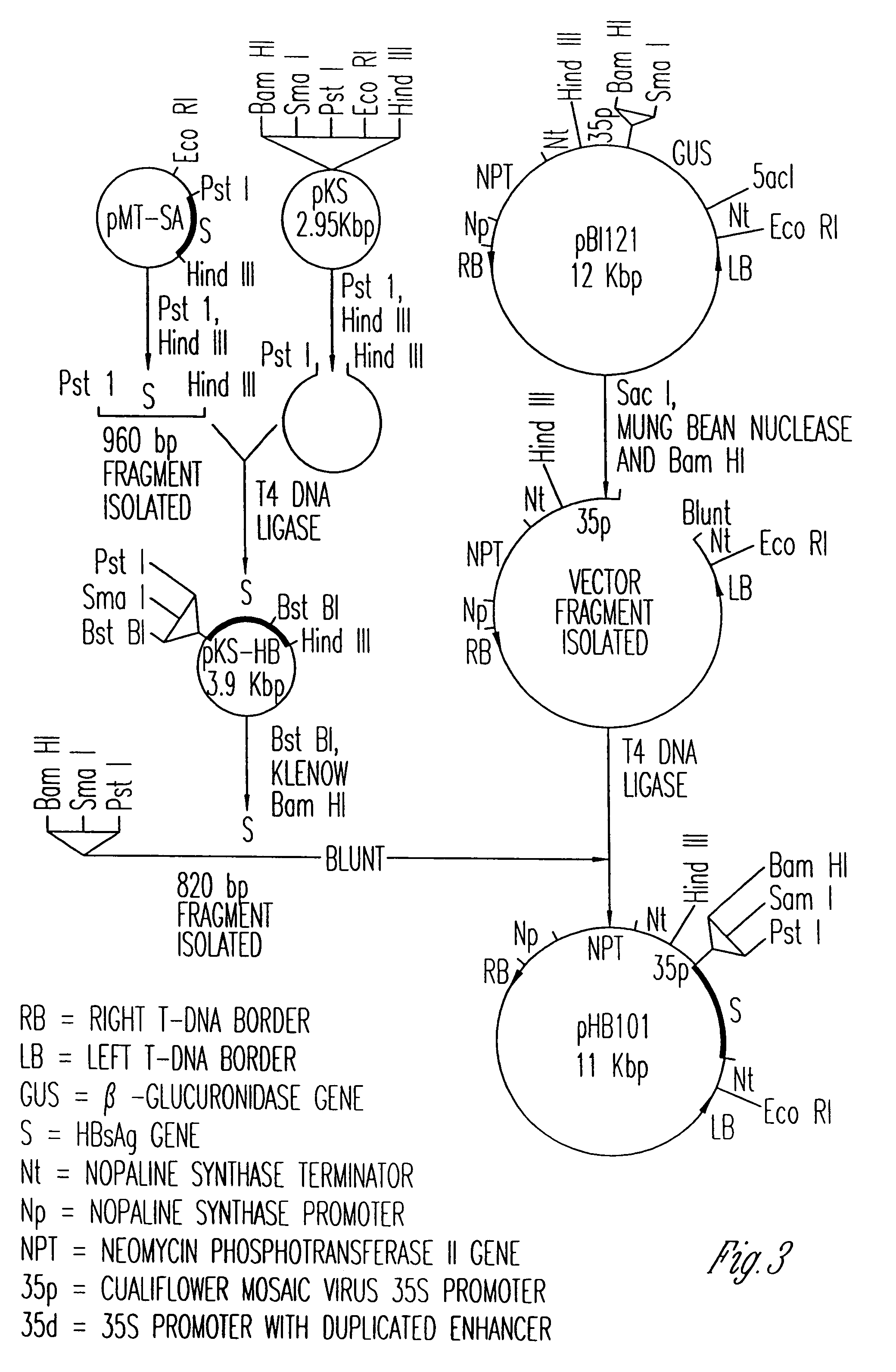Vaccines expressed in plants
a technology of plants and vaccines, applied in the field of vaccines, can solve the problems of increasing the cost of vaccines for diseases such as poliomyelitis, measles, mumps, hepatitis b, and the inability to provide large human and animal populations, and achieve the effect of reducing the subsequent anti-antigen respons
- Summary
- Abstract
- Description
- Claims
- Application Information
AI Technical Summary
Benefits of technology
Problems solved by technology
Method used
Image
Examples
example i
A. Construction of Hepatitis B Surface Antigen Expression Vector pHVA-1
[0101]Referring initially to the diagrammatic plasmid construct illustrated in FIG. 1, the DNA sequence encoding for HBsAg contained within restriction endonuclease sites Pst I-Hind III on plasmid pWR / HBs-3 was excised and subsequently ligated into the unique Bam HI-Sst I site of the excised beta-glucuronidase (GUS) gene on plasmid pB121 to construct the binary vector plasmid pHVA-1.
[0102]Plasmid pB121, obtained from Clonetech Laboratories, Inc., Palo Alto, Calif., has cleavage sites for the restriction endonucleases Bam HI and Sst I located between the CaMV 35S promoter and the GUS structural gene initiation sequence and between the GUS gene termination sequence and the NOS polyadenylation signals, respectively. Plasmid pB121 was selected since the GUS structural gene can be excised from the plasmid using Bam HI and Sst I, another structural gene encoding an antigenic protein can be inserted, and the new gene wi...
example ii
A.1 Construction of Hepatitis B Surface Antigen Epression Vector pHB101
[0116]Referring to the plasmid construct illustrated in FIG. 3, the DNA sequence encoding for HBsAg contained within restriction endonuclease sites Pst I-Hind III on plasmid pMT-SA (provided by Li-he Guo, Chinese Academy of Sciences) was excised and subsequently ligated into the unique Bam HI-Sac I site of the excised beta-Glucuronidase (GUS) gene on plasmid pBI121 to construct the binary plasmid pHB101.
[0117]Plasmid pBI121, obtained from Clonetech laboratories, Inc., Palo Alto, Calif., has cleavage sites for the restriction endonucleases Bam HI and Sac I located between the CaMV 35S promoter and the GUS structural gene initiation sequence and between the GUS gene termination sequence and the NOS polyadenylation signals, respectively. Plasmid pBI121 was selected since the GUS structural gene can be excised from the plasmid using Bam HI and Sac I, another structural gene encoding an antigenic protein can be insert...
example iii
A. Transformation of Tomato with HBsAg Gene
[0142]Tomato, Lycopersicom esculentum var. VFN8, was transformed as in Example II. B and C by the leaf disc method using Agrobacterium tumefaciens strain LBA4404 as a vector, McCormick et al., 1986.23 A. tumefaciens cells harboring plasmid pHB102, constructed as in Example II. A.2, which carries the HBsAg coding region fused to the tobacco etch virus untranslated leader, Carrington & Freed, 1990,73 and the cauliflower mosaic virus 35S promoter, were used to infect cotyledon explants from seven day old seedlings. The explants were not preconditioned on feeder plates, but infected directly upon cutting, and co-cultivated in the absence of selection for two days. Explants were then transferred to medium B, McCormick et al., 1986,23 containing five-tenths milligrams per millimeter (0.5 mg / ml) carbenicillin and one-tenth milligram per milliliter (0.1 mg / ml) kanamycin for selection of transformed callus. Shoots were rooted in MS medium containing...
PUM
| Property | Measurement | Unit |
|---|---|---|
| volumes | aaaaa | aaaaa |
| height | aaaaa | aaaaa |
| pH | aaaaa | aaaaa |
Abstract
Description
Claims
Application Information
 Login to View More
Login to View More - R&D
- Intellectual Property
- Life Sciences
- Materials
- Tech Scout
- Unparalleled Data Quality
- Higher Quality Content
- 60% Fewer Hallucinations
Browse by: Latest US Patents, China's latest patents, Technical Efficacy Thesaurus, Application Domain, Technology Topic, Popular Technical Reports.
© 2025 PatSnap. All rights reserved.Legal|Privacy policy|Modern Slavery Act Transparency Statement|Sitemap|About US| Contact US: help@patsnap.com



